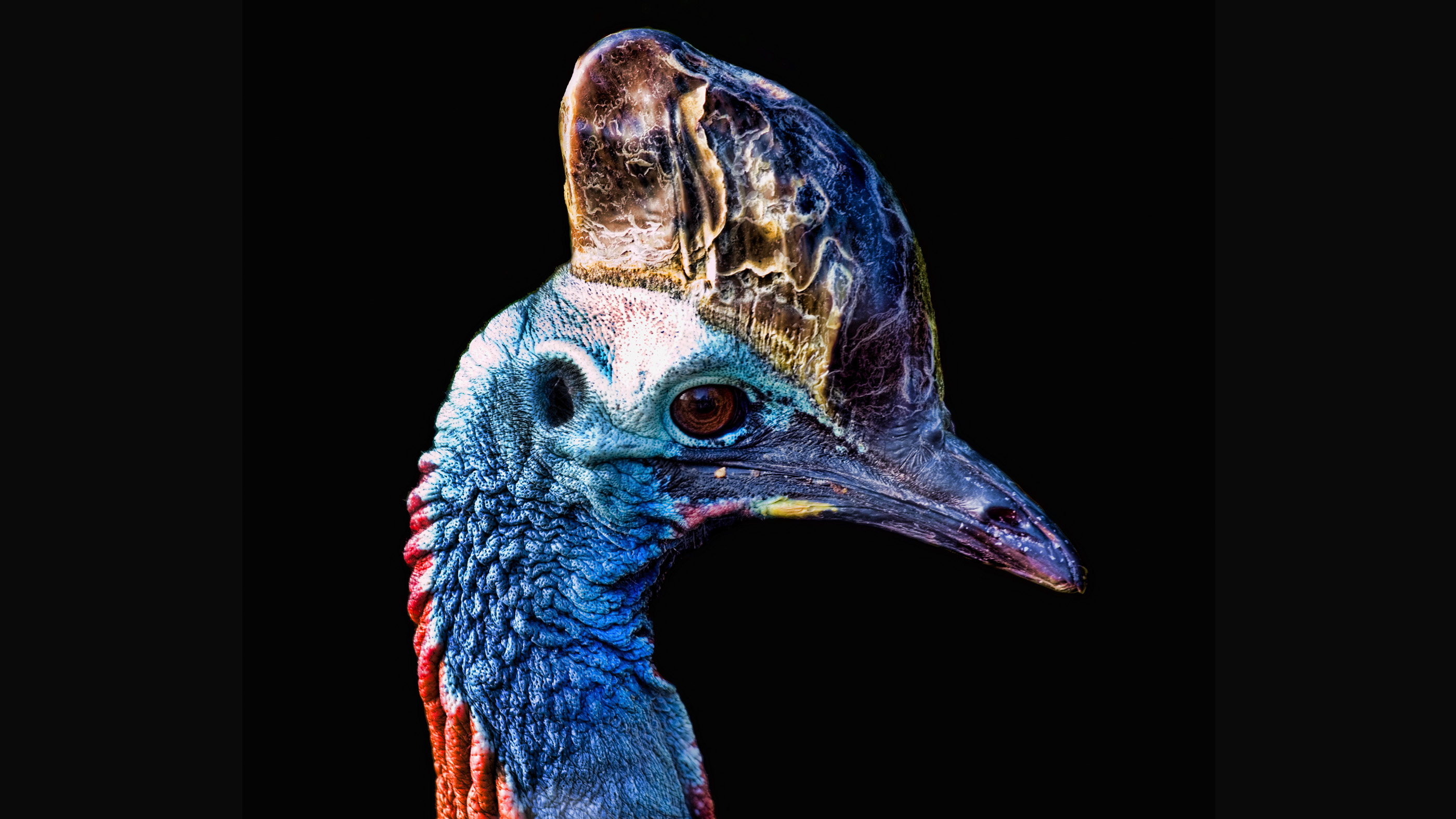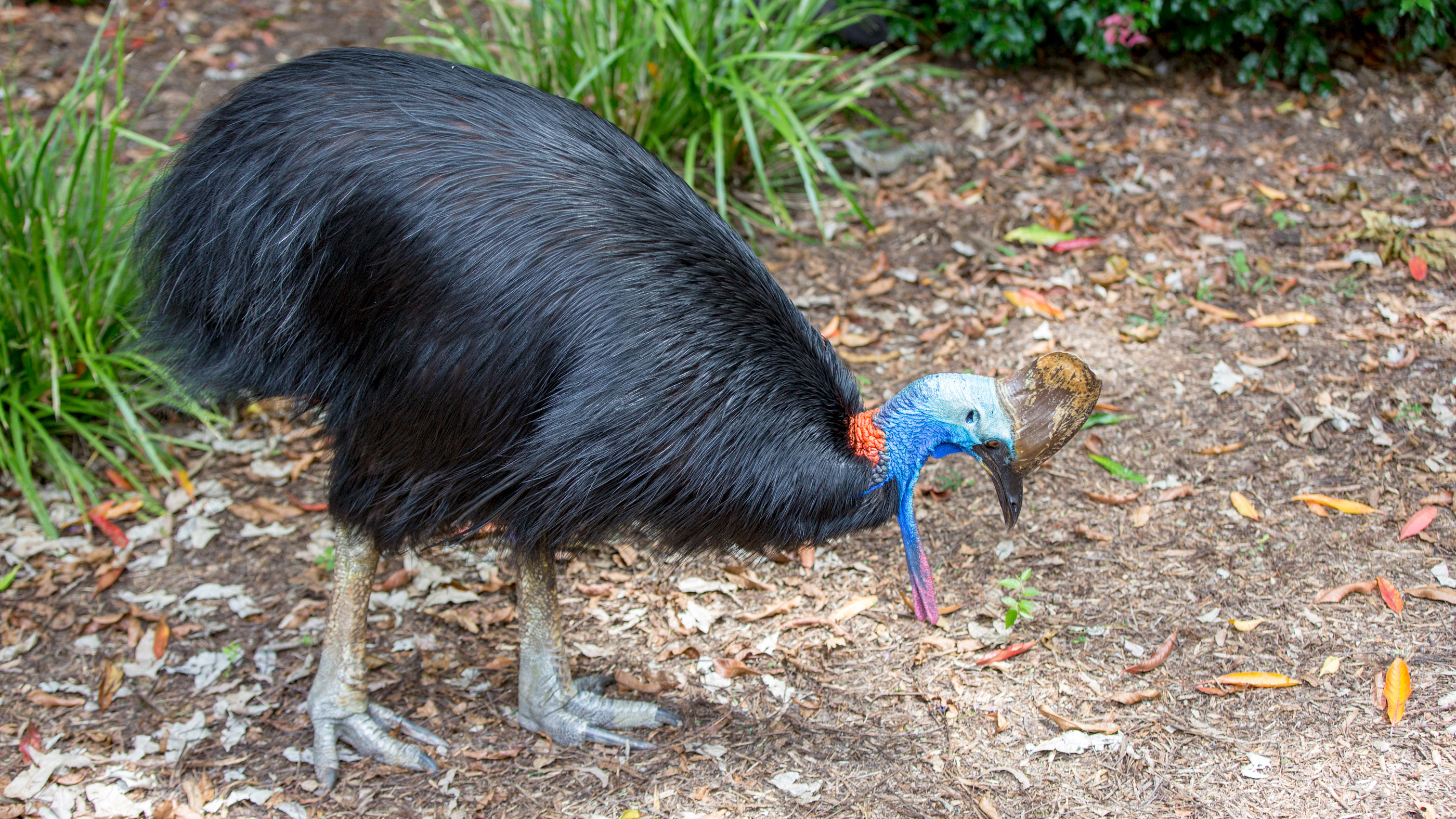These giant birds could eviscerate you. People were raising them 18,000 years ago.
Whoever came up with the age-old riddle "Which came first: the chicken or the egg?" failed to consider the world's most dangerous (and Australia's largest) bird — the cassowary (Casuarius).
New research suggests that the relationship between humans and cassowaries dates back to the late Pleistocene era — several thousand years before humans domesticated chickens and geese. "And this is not some small fowl," lead study author Kristina Douglass, an archaeologist at Penn State, said in a statement. "It is a huge, ornery, flightless bird that can eviscerate you — most likely, the dwarf variety that weighs 20 kilos (44 pounds)." By examining the remains of ancient cassowary eggshells, Douglass and an international team of researchers determined that some 18,000 years ago, people in New Guinea were collecting, hatching — and possibly raising — cassowary chicks, which the researchers consider a sophisticated food-gathering technique. This represents the earliest known evidence of intentional bird rearing.
Using a combination of 3D imaging, computer modeling and egg morphology, the scientists examined over 1,000 fragments of cassowary eggshells dating to between 6,000 and 18,000 years ago. "We used that approach to see whether or not there was any pattern in terms of when people were harvesting cassowary eggs," Douglass told Live Science. "And we found that there was a pattern and that people were harvesting eggs preferentially in the later stages of development."
According to Douglass, people would have kept these eggs for one of two purposes: to eat them or to raise the hatched chicks for their meat and feathers. Today, late-stage fertilized eggs are a popular street food in several East Asian and South Pacific countries — notably, the Philippines, according to a paper published in 2019 in the Journal of Ethnic Foods. Known as balut, the dish is usually made with duck eggs today. But Douglass and her team suggest that people in New Guinea may have been eating cassowary balut thousands of years ago.
Or, they may have been raising cassowary chicks. Like geese, cassowary chicks imprint on the first creature they see, according to the University of Michigan's Animal Diversity Web. That makes them oddly ideal for human rearing, a practice that continues in parts of New Guinea to this day, University of Maine anthropologist Paul Roscoe told Live Science. Though Douglass and her team did not find evidence of ancient people penning cassowaries, it is something they plan to look for in the future.
Cassowaries and their eggs are valuable resources for New Guineans. Historically, cassowary tibiotarsae, the upper part of the bird's leg, were used to fashion bone daggers for hunting, according to research published in Royal Society Open Science. Today, their feathers are prized for ornamentation, and the birds remain an important source of meat. "Cassowary is quite a delicacy," Roscoe said.
But these striking birds, which can reach nearly 6 feet (1.8 meters) tall and 120 pounds (54 kg), are also incredibly dangerous. "They have these really large, 4-inch-long [10 cm] claws. And if they feel threatened, they will use them," Douglass said. A frightened or territorial cassowary can lash out with a kick powerful enough to eviscerate a medium-size (or even human-size) mammal, vertebrate paleontologist Darren Naish wrote for Scientific American. Cassowaries do occasionally kill humans, including a man in Florida who was lethally attacked by a cassowary he kept on his farm in 2019, The Florida Times-Union reported. Even so, these instances are exceedingly rare.
Get the world’s most fascinating discoveries delivered straight to your inbox.
In addition to being anthropologically important, ancient cassowary husbandry helps dispel some pervasive scientific myths. To this day, many people broadly assume that hunter-gatherer cultural practices are somehow less sophisticated than those of agricultural societies, Douglass said. But her team's research contradicts this outdated assumption.
"People had this very sophisticated knowledge that they were passing down from one generation to the next," she said, and this kind of research reaffirms "the importance of local and Iindigenous knowledge."
The research is detailed in the October issue of the journal Proceedings of the National Academy of Sciences.
Originally published on Live Science.

Joanna Thompson is a science journalist and runner based in New York. She holds a B.S. in Zoology and a B.A. in Creative Writing from North Carolina State University, as well as a Master's in Science Journalism from NYU's Science, Health and Environmental Reporting Program. Find more of her work in Scientific American, The Daily Beast, Atlas Obscura or Audubon Magazine.
 Live Science Plus
Live Science Plus







